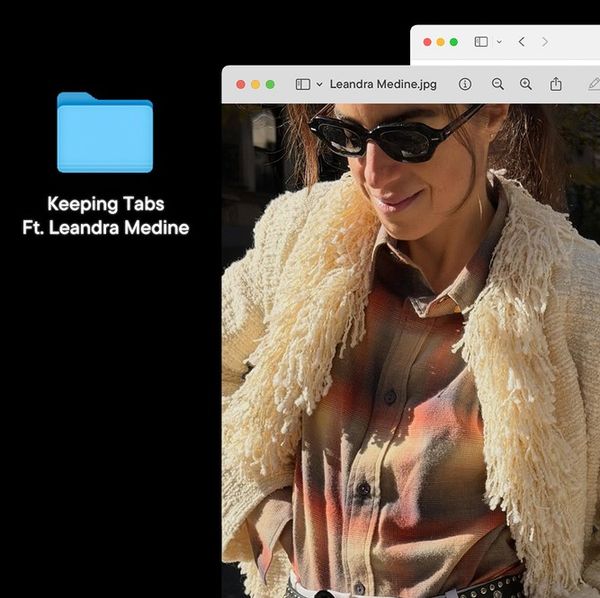5 Next-Gen AAPI Designers On Culture, Creativity & Inspiration
"Design isn’t just about clothing—it’s about remembering who you are."

As we kicked off Coveteur's first-ever AAPI Creatives Week, I immediately knew I wanted to spotlight the new class of AAPI designers who are making their mark in fashion. Asian cultures go back thousands of years, and are brimming with a rich history of tradition, spiritual beliefs and art forms. Those of us who grow up with those cultures passed down to us, while also straddling the ways of the Western experience, often find that they're imbued deeply in the way we approach the world. When it comes to designers, I was curious about how upbringing and traditions can play a part in the creative process—whether it's dreaming up a new collection, selecting materials or developing new silhouettes.
I reached out to five next-generation AAPI designers—Kim Shui, Andrew Kwon, Sheena Sood, Terrence Zhou and Kuai Li—to ask them exactly that. Unsurprisingly, all of them were deeply influenced by their unique upbringings, spanning from Rome to South Korea to Wuhan. Their stories celebrate the individuality, pride, and diversity of the AAPI experience, and I hope they inspire and resonate with you as much as they have with me.
Kim Shui
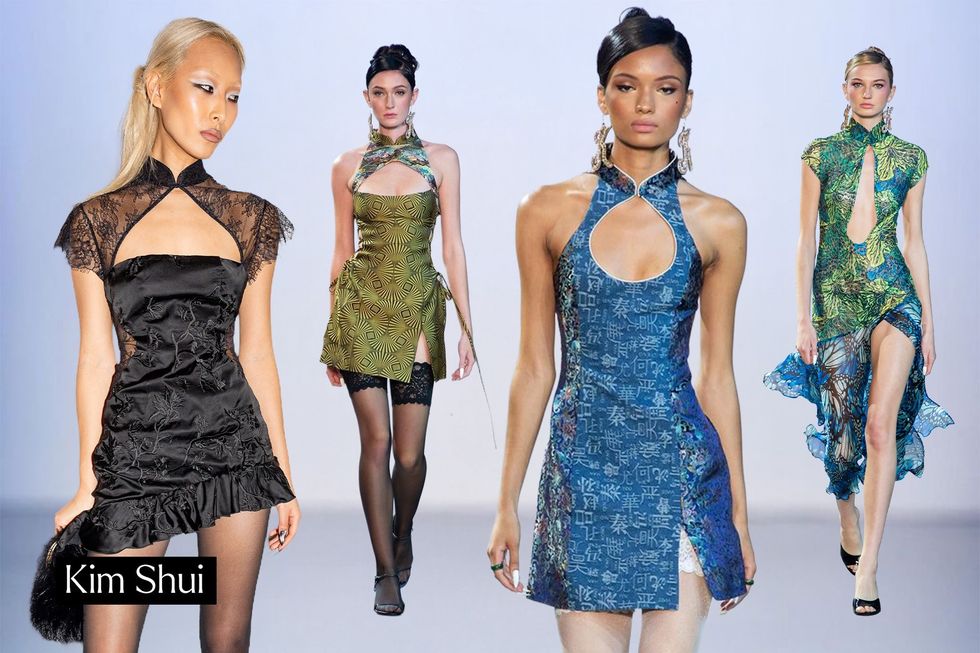
Kim Shui
Designer: Kim Shui
Describe your cultural background:
"I am a first-generation American, born in the U.S. to parents who immigrated from China, and I grew up in Rome, Italy since the age of three."
Three words that encapsulate your brand:
"Spicy, eccentric, daring."
How did you get into fashion design?
"For as long as I can remember, I’ve always wanted to become a fashion designer. Growing up in Rome, I was constantly surrounded by beauty—sculptures, paintings, architecture—and it made a deep impression on me. I spent hours sketching, painting, and making collages. Design and fashion were my escape and my way of understanding the world.
At the same time, I never felt like I fully belonged. I didn’t feel Italian enough, Chinese enough, or American enough. I was always visible for the ways I didn’t fit in—not for who I really was. Over time, I realized that clothing was more than just something you wear—it could be a powerful way to express identity and tell your own story.
That’s when my obsession with fashion began. Design became my language—a way to connect with others, to reclaim my visibility, and to be seen on my own terms."
How does your heritage play a part in how you operate as a designer?
"Being raised in a Chinese household while living in Italy and then later coming to the U.S. always ensured that I was surrounded by a blend of cultures, which has become a part of who I am and how I express myself creatively. I love reinterpreting Chinese motifs, traditional garments and symbols under different contexts.
Are there any cultural traditions or elements that influence your creative process?
"Chinese numerology (i.e. the numbers six and eight being considered lucky) affects my selection of time slots and launch dates. Then, bigger things like perseverance and honoring my ancestors play into my work."
What are you inspired by right now?
"I’m constantly inspired by different things I see or hear, but most recently, I passed by Sun Life Organics the other day in New York, and then went in on a deep dive on the founder Khalil Rafati’s story. He went from living on Skid Row at 33 to founding a multi-million dollar company—his story has truly been inspiring to hear. It really shows to me that tenacity, dedication and grit can change and make your dreams a reality."
Is there an AAPI creative whose work you admire?
"I’m inspired by my friend Bing Chen, the founder of Gold House for the profound impact he’s made on the AAPI community and his genuine desire to uplift those around him. His charisma is unmatched—he’s magnetic both on and off stage!"
What's a moment in your career where your heritage inspired a piece or collection?
"When I started my brand in 2016, it was an act of resistance. I took all these different elements that were central parts of me—like my cultural upbringing, my femininity, looking different from those around me—and created clothing where those parts of me were uplifted and became items of celebration and sources of joy. I hope that my clothes inspire other women to do the same. There was one Spring Collection that I felt was really well received where my Chinese heritage is really visible in the pieces. We made the iconic V-neck dress that is still a core staple to this day, and the halter brocade dress."
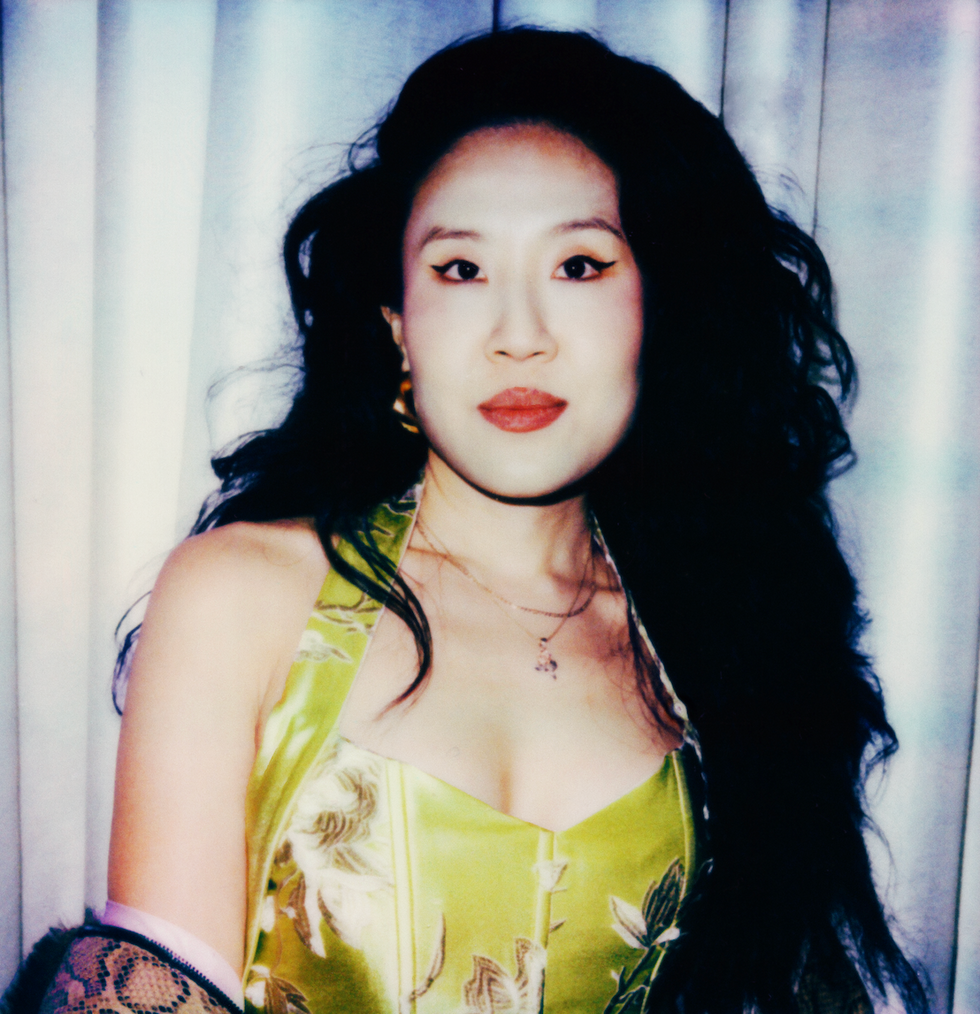
Andrew Tess
Andrew Kwon
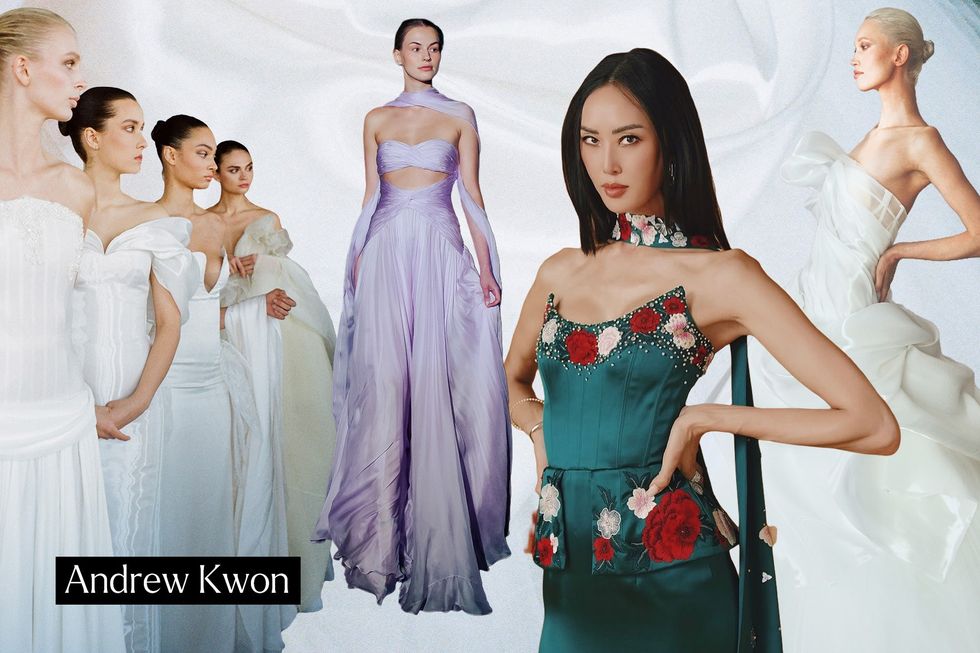
Designer: Andrew Kwon
Describe your cultural background:
"I’m Korean-American. I was born and raised in Colorado, and spent part of my adolescence between there and the suburbs of Los Angeles before my family moved just outside of Philadelphia. I ultimately settled in New York in 2014. While my surroundings varied, elements of Korean culture were constant in my home—especially symbolic heirlooms, like the traditional mother-of-pearl jewelry box that sat quietly on display. Those emblems of craftsmanship and quiet elegance never left me.
Three words that encapsulate your brand:
"Romantic, ethereal, timeless."
How did you get into fashion design?
"I’ve always dreamt in silhouettes and fabric, long before I had the words to call it fashion design. My earliest inspiration was my mother—her love for fashion was quiet, but profound. The way she dressed wasn’t just about beauty; it was how she built her own sense of self, her confidence. Watching her was like witnessing magic unfold each day.
In seventh grade, on a whim that now feels like fate, I sent an email to Parsons. That single moment of serendipity led me there years later—but as an architecture student. I struggled to find myself in that world until one professor, and the encouragement of my mother and stepfather, helped me rediscover the dream I’d quietly carried all along.
After switching to fashion design, I became a finalist in the Supima Design Competition, representing Parsons, and was honored with the 2018 LEF Scholarship Award. But the moment that truly changed everything came at my mother’s wedding—one of the first weddings I ever attended. Watching her walk down the aisle, transformed by emotion and grace, I realized what I wanted to devote my life to: creating gowns that capture that same sense of wonder and transformation. That was the beginning of my journey into bridal and eveningwear."
How does your culture play a part in how you operate as a designer?
"My heritage influences me in ways that are both visible and deeply internal. My mother has long been my muse—her commitment to beauty, grace, and intentionality has shaped my own design sensibility. In Korean culture, there's a quiet discipline, a reverence for detail, and a poetic way of expressing emotion—those values guide the way I build, edit, and envision each piece.
What's one part of your culture that influences you?
"Traditional Korean art and craftsmanship. Growing up, I was surrounded by objects adorned with cranes, butterflies, and floral motifs—symbols of longevity, transformation, and harmony. These continue to surface in my work through embroidery, structure, and palette—often subtly, but always with intention."
What are you inspired by right now?
My most recent collection was inspired by memory and light. I came across Nymphes du Nord, (Nymphes by The North), a painting by Paul Émile Chabas, and was struck by the way it captured the shimmer of water and fabric at dawn. It reminded me of fishing trips with my father and brother as a child—we’d leave before sunrise and return just as the sun was setting. I remember watching how the light moved across the water, shifting gently with the current. That interplay of reflection, softness, and stillness became the emotional and visual language of this collection—resulting in silhouettes that feel fluid, romantic, and diaphanous."
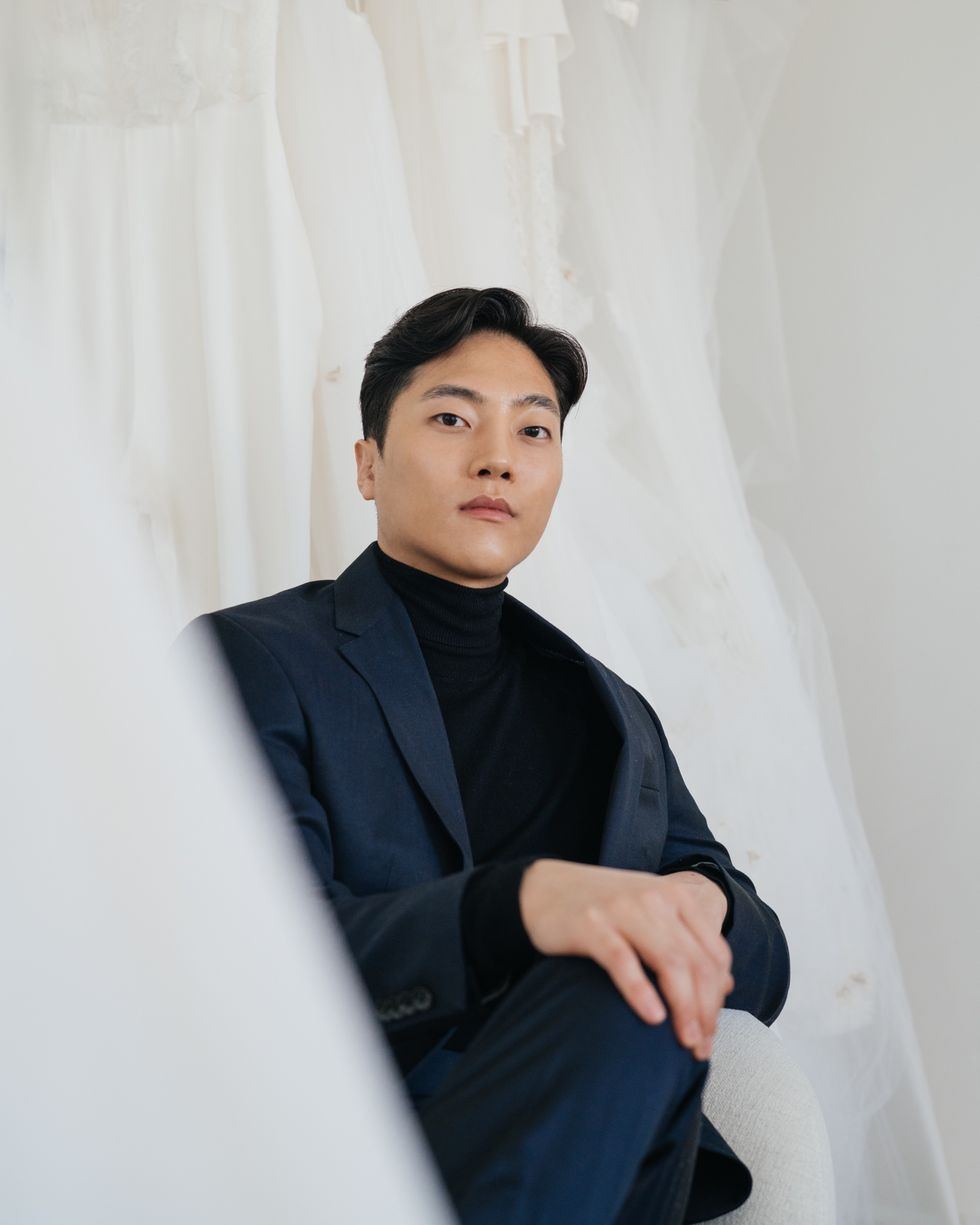
Andrew Kwon
Is there an AAPI creative whose work you admire?
"Michelle Yeoh. Her body of work transcends boundaries, both cultural and artistic. She brings strength, grace, and complexity to every role she embodies. Her career is a reminder that identity is a source of power, not limitation—something I try to express in my own designs."
What’s a pivotal moment in your career where your heritage inspired a specific piece or collection?
"One of the most meaningful examples that comes to mind is Collection 7: prelude no. 1. I designed it as part of the CFDA x Genesis House AAPI Design and Innovation Grant Fund. It was directly inspired by memories of the mother-of-pearl jewelry boxes and lacquered furniture in my childhood home—artifacts passed down from my mother and grandmother.
A trip to Seoul around the same time also deepened this connection, reminding me of the energy and elegance of contemporary Korea: its seamless blend of tradition and technology, stillness and momentum. The collection became a love letter to my heritage. I recently had the opportunity to dress Chriselle Lim in a piece from this collection, celebrating Korean heritage at this year’s Gold Gala."
abacaxi
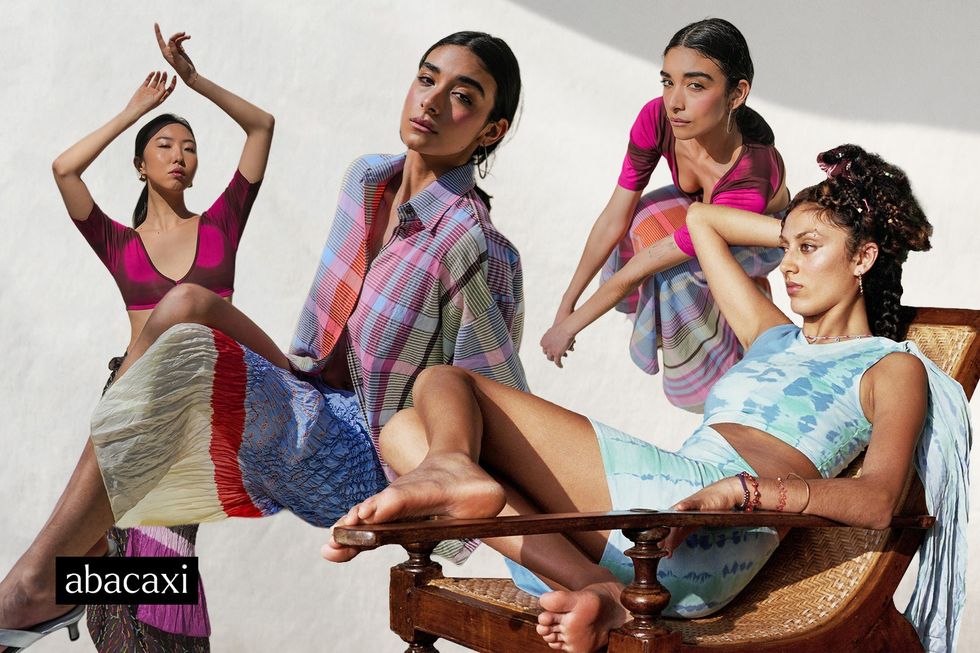
Designer: Sheena Sood
Describe your cultural background:
"Indian-American. I was born and grew up in Minnesota."
Three words that encapsulate your brand:
"Playful, psychedelic, seductive."
How did you get into fashion design?
"You could say I started in middle school, when I began making my own clothing catalogs, and asking my younger sister and her friends to submit their designs for my consideration and curation. In high school, I took my mom's sewing machine out of storage and taught myself how to make simple garments through exploration (this in the '90s, well before YouTube!). I believe my first success was a crushed velvet spaghetti-strap slip dress.
I went to Brown University and majored in Visual Art and Comparative Literature, with literary translation from Spanish to English. My artwork and paintings often incorporated fabric, hand-beading, sequin work; I took courses at nearby Rhode Island School of Design in Fibers & Dyeing, Weaving, and Silkscreen, and also spent a semester abroad in the textile design department at Central Saint Martin’s in London.
After college I moved to NYC knowing I wanted to find work as a designer. Before starting abacaxi, I worked as a textile designer for several different brands for over 10 years, specializing in print design, embellishment, woven development, and color and concept research.
How does your heritage play a part in how you operate as a designer?
"Though nobody on either side of my family worked in design or garment production, or any creative industry at that time, I’ve come to realize how much textile knowledge was passed down to me by my mom, aunts, and my maternal grandmother. From a young age I understood what the couture process entailed, from fabric choice, to dyeing, cutting, draping, embellishing, and finishing, simply because I was able to witness it as we had clothes custom-made for family weddings in India. I was always fascinated to learn about the details and differences between zari, zardozi, gota, sequin-work, shisha-work, aari, and mukaish work, for example.
A desire to bring those techniques, plus ancestral dyeing, weaving, knitting and crochet, into a contemporary context that I’d love to wear on the daily, is what led me to create abacaxi. My goal was to celebrate, and sometimes even revive, these traditions that have not had any industry support or are not widely known in a Western fashion context.
What's one part of your culture that influences you daily?
"I love our love for bold, bright, saturated color! I am often influenced by color itself, and do believe in the healing power of color. I love seeing the way that people back home use color and pattern in every day dress and in the home."
What are you inspired by right now?
"This particular shade of saturated green that is very Indian to me, as worn by Aishwarya Rai on the Cannes red carpet in 2003 and as seen on this abacaxi dress; drinking coconut water straight from the coconut; colorful iced drinks like strawberry matcha and espresso lemonade, ikebana floral arrangements, and lying in one of my hammocks and feeling sun and rain hit my face."
Is there an AAPI creative whose work you admire?
"I’m inspired by the Bollywood actress Zeenat Aman, as a lifelong fashion and beauty icon, but even more so by her elegance now in her seventies. I’m inspired by the way she is recounting and telling her stories on her own terms, through authentic sharing."
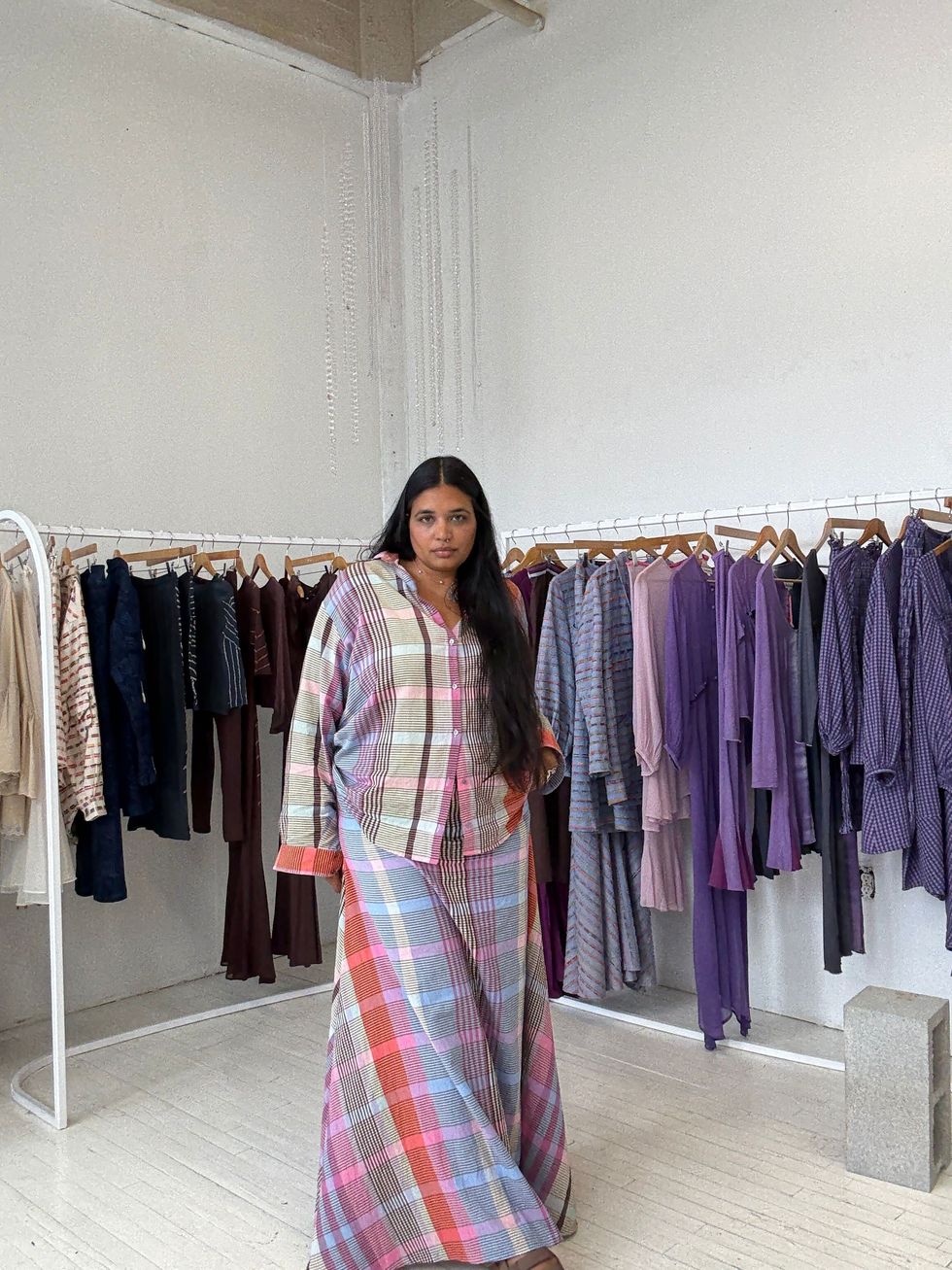
Sheena Sood
Bad Binch TONGTONG
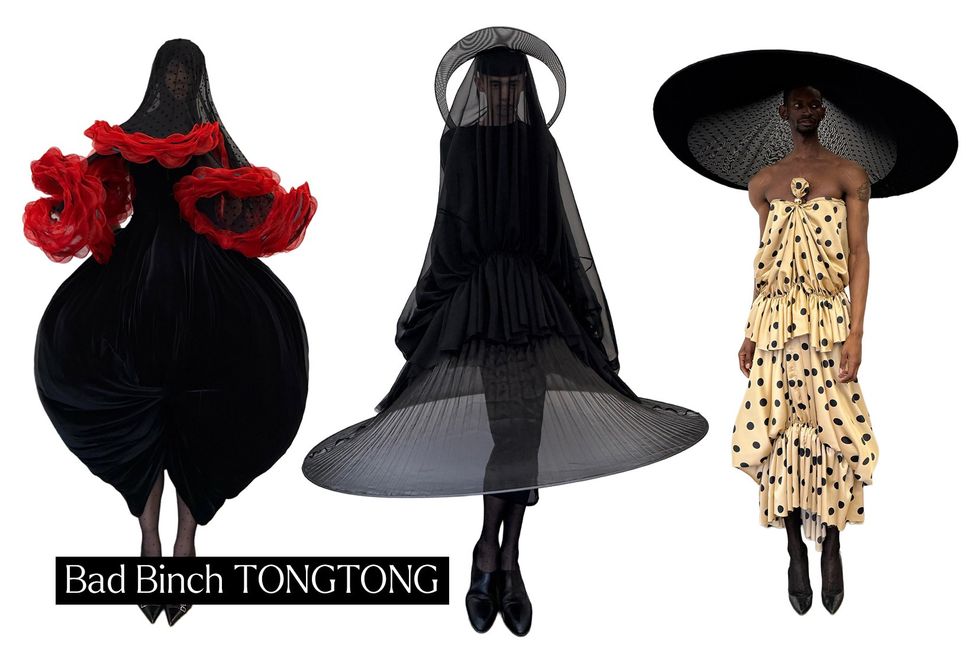
Designer: Terrence Zhou, Bad Binch TONGTONG
Describe your cultural background:
"I’m Chinese—born and raised in Wuhan. I grew up surrounded by contrast: old temples next to neon malls, ancient stories colliding with a hyper-modern future. Now I live in New York, which is honestly just as chaotic. I feel like I’m always floating somewhere between worlds—between East and West, tradition and disruption."
Three words that encapsulate your brand:
"Surreal. Rebellious. Transformative."
How did you get into fashion design?
"I actually started in engineering and math. I’ve always loved structure and problem-solving, but I also had this loud emotional, artistic side that needed space. Fashion showed up like a language I didn’t know I needed—it let me build things that weren’t just logical, but felt true. That tension between form and feeling, between clarity and chaos—that’s where I live."
How does your heritage play a part in how you operate as a designer?
"There’s a kind of spiritual logic I’ve carried from Chinese culture. The idea that everything is connected, that nothing exists without its opposite—light and shadow, softness and structure. I bring that into how I build clothes, shows, even how I think about time and purpose. For me, design is less about trends and more about storytelling and energy."
What’s one part of your culture that influences you?
"Reincarnation. The belief that we’ve all been here before and might be here again. That ideas, dreams, even fabrics carry memory. It’s why I treat every collection like a ritual, like I’m channeling something that already existed in another form."
What are you inspired by right now?
"Aliens. Angels. Spiritual awakenings. The idea that clothing can be a portal—something that transforms how you move through the world. I want to make pieces that feel like sacred armor for people navigating this weird, beautiful mess we call modern life."
Is there an AAPI creative whose work you admire?
"Cai Guo-Qiang. His work blows stuff up, literally, but it’s full of soul. It’s big and loud but still deeply spiritual. That balance is something I really connect with."
A moment where your heritage inspired a piece or collection:
"After a hypnosis session, I saw this vision of myself as a blind painter from the Tang dynasty, painting Buddhas as everything burned around me. That image stuck. It became the foundation of one of my church shows—a mix of destruction, devotion, and rebirth. It reminded me that design isn’t just about clothing—it’s about remembering who you are, across lifetimes."

Terrence Zhou
Quine Li

Designer: Kuai Li
Describe your cultural background:
"I was born in Hunan, in the south of China, and began studying painting at the age of six. My undergraduate training in Industrial Design at the Central Academy of Fine Arts instilled in me a rigorous approach and a habit of storytelling through structure and materials. After working for three years as Design Director at a startup in Beijing, I moved to New York in 2021 to pursue an MFA in Fashion Design at FIT and founded my own brand, Quine Li. Building on my background in industrial design and my passion for architecture and sculpture, I create fashion pieces that merge these disciplines into wearable forms."
Three words that encapsulate your brand:
"Sculptural, futuristic, playful."
How did you get into fashion design?
"My spatial thinking, shaped by industrial design, has given me a sharp sensitivity to the relationship between the human body and structure. One day, I stumbled upon a runway video of Alexander McQueen and realized that fashion could be wearable architecture and a medium for storytelling. I then dedicated myself to self-studying draping and sewing, infusing sculptural thinking into fabric. When my first piece moved in rhythm with a model’s breath, I knew I wanted to fully devote myself to fashion—using structure to give form to emotion."
How does your heritage play a part in how you operate as a designer?
"Inspired by the Kunqu opera, The Peony Pavilion, I created my first collection, Dream of the Garden, by blending the emotional intensity of Chinese drama with elements of traditional clothing. It was a new attempt to merge a classic Chinese narrative with a Western visual language. However, I have always believed that design is a universal language—it must transcend cultural boundaries and be understood by people from all backgrounds. Therefore, while honoring the spirit of the East, I focus on using universally resonant structures and color logic to craft a visual narrative that speaks to a global audience."
What's one part of your culture that influences you?
"Drama and traditional dress have been core inspirations throughout my work. Both my early collection, Dream of the Garden, and the more recent Swallowtail Butterfly Qipao series draw from the theatrical intensity and ritualistic presence of Chinese opera costumes. These influences inspire me to embed dramatic silhouettes and a sense of rhythm into modern tailoring, imbuing the wearer with a performative confidence."
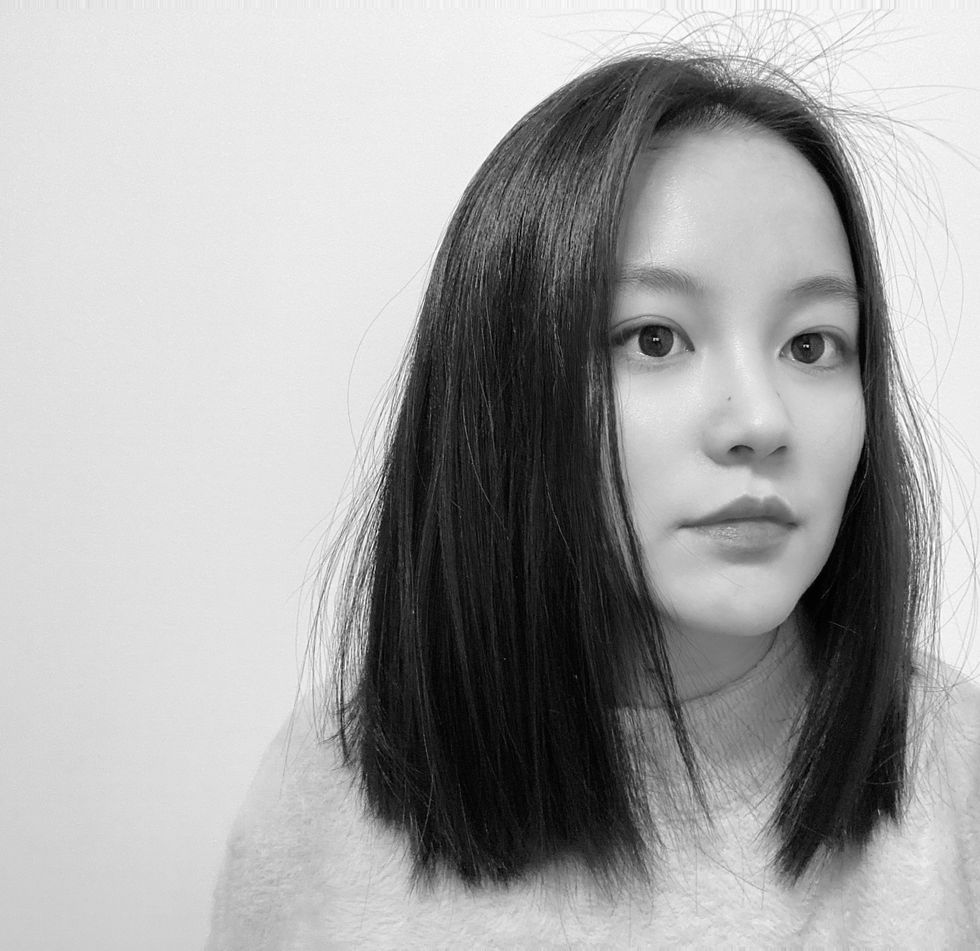
What are you inspired by right now?
"Performance art and sculpture deeply inform my creative process. The frozen moments of an actor under the spotlight capture the peak tension of body and emotion, while a sculptor’s mastery of form and negative space offers endless inspiration for silhouette and proportion. I am exploring ways to merge these two art forms—so that in my next collection, sculptural strength and theatrical emotion can coexist, flowing between stillness and movement."
Is there an AAPI creative whose work you admire?
"Eiko Ishioka has been a profound inspiration to me. Her ability to seamlessly blend cinematic language, stage visuals, and costume design proves that visual storytelling knows no boundaries of medium. Her work continues to encourage me to envision a larger stage beyond fashion itself."


